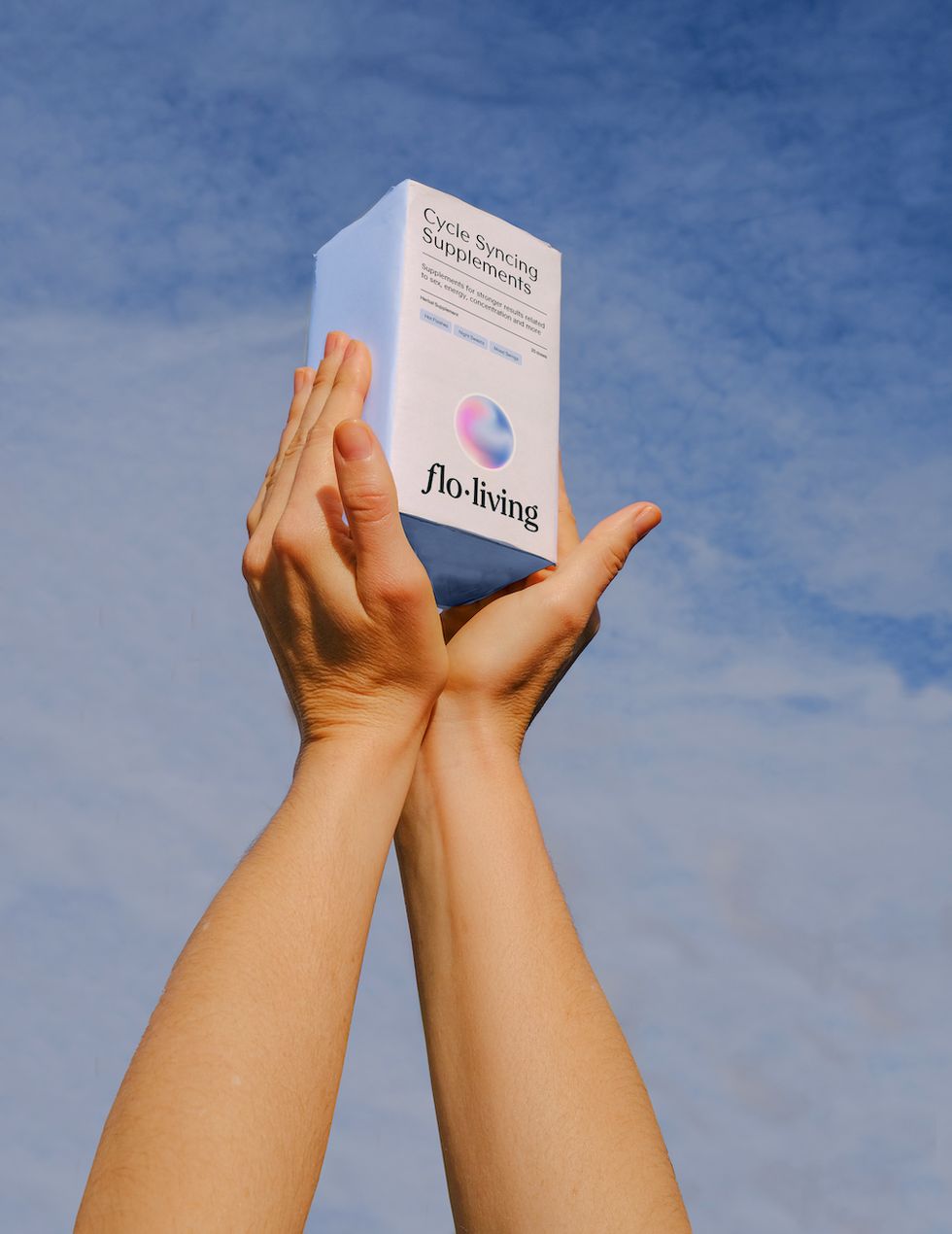Products You May Like
It should come as no surprise that, post-pandemic, people are slowing down. Way down. The side effects of social distancing run deep. Sequestered to our respective homes alone (or, if you’re lucky, with friends or family), separation forced us to reexamine our relationship with the world and ourselves.
Some of us realized we hated our jobs, and began the sly process of “quiet quitting”—or put in our two weeks notice the good old-fashioned way. People with 10-step beauty routines realized they could free up space on their vanity and in their schedule. The inescapable pivoting trend morphed into a societal obsession with boundaries.
In other words, slow living became the lifestyle du jour.
So much so, that even people who menstruate are rearranging their lives to move with the natural rhythms of their bodies. The proper name of this phenomenon is commonly referred to as “cyclical living,” or when people align their daily activities, workout routines, and dietary choices with their menstrual cycle phases.
“In retrospect, I think many people with menstrual cycles do this innately to a lesser degree,” says Taylor Hahn, MD, FACOG, a board-certified OBGYN at HerMD. “It has the potential to optimize physical and mental health as well as personal and professional relationships by encouraging the menstruating person to become much more intentional with how and when they choose to interact, communicate, and delegate.”
Back in 2019, the U.S. Women’s National Team famously optimized their training regimen—and eventually won the World Cup—by doing this, and now, more people than ever consider it a holistic approach to their well-being.
Alisa Vitti, a functional nutritionist, women’s hormone expert, and creator of the first proprietary Cycle Syncing Method® has been leading the charge. Her femtech company FLO Living, which is celebrating its 10th anniversary this month with an expanded suite of resources, merges evidence-based functional food and micronutrient protocols with tools, tech, and products to make cycle tracking easier than ever.
She believes that, although the pandemic may not have directly impacted the popularity of her work, it did give menstruators the opportunity to experience life management on their own biological rhythm versus a corporate culture that is oriented to a male’s 24-hour pattern.
“The benefits of using The Cycle Syncing Method® are enormous,” Vitti says. “You can keep your blood sugar more stable, reduce stress levels, boost estrogen elimination, improve bowel movements and gut health, clear skin, eliminate all PMS symptoms, eliminate cramps, promote cycle regularity, experience better moods, better sleep, better sex drive, lose weight more efficiently, and boost your productivity. Everything works better in your body when you support your biological rhythm properly.”
Cyclical living also demystifies those parts of the menstrual cycle that are shrouded in misinformation or myth. From a young age, it’s common to be taught that your cycle is a nuisance, that hormones are complicated, and that pain is unavoidable. It also doesn’t help that research around women’s health is minimal.
“It may be shocking—but not surprising—that women were not even legally required to be included in research studies until 1993,” adds Dr. Hahn. “I see shortcomings in all aspects of women’s health research, but particularly in the clinical areas of midlife women’s health and sexual health.”
So much of the current conversation about midlife care is still based on older studies that do not necessarily apply to women today. Until there is global acceptance that women are not merely just the counterparts to men and experience physical, mental, emotional, and sexual health differently and uniquely, there will remain a great deal of work to be done.”
That being said, here are some things to keep in mind if you want to pursue phase-based care.
Step 1: Get To Know Your Menstrual Cycle
The menstrual cycle, which averages 28 days, is considered an infradian rhythm, or a biological cycle that occurs for longer than 24 hours. “Much like the circadian rhythm needs specific support, our infradian rhythm needs to be supported for it to perform optimally,” says Vitti, who wrote a best-selling book, In the FLO, on this very topic.
“The problem that I also found was that everything women have been told to do, from eating the same calories daily to working out the same way daily, to waking up at the same time every morning, is not only based on research done on men that actively excluded women, but fundamentally disrupts this infradian rhythm and causes all sorts of hormone issues that affect a woman’s cycle, immune response, stress response, brain and metabolic health.”
Here’s the 411 on each part:
The menstrual phase is the first phase, lasts 2-7 days on average, and includes your period. Estrogen and progesterone hormone levels drop if an ovulated egg isn’t fertilized, and the endometrium, the thickened lining of the uterus, sheds.
Dr. Hahn says, “This lining is a mix of blood, tissue, and mucus, which makes the consistency unique from the blood you may see elsewhere.” It’s also when you are more likely to experience cramping and pelvic pain, bloating, breast swelling and tenderness, anxiety, sadness, and irritability.
Step 2: Track Your Cycle at Each Phase
According to Vitti, it’s important that each phase is properly supported. This takes into account how you eat, how you move, and how you interact with others.
“During your follicular and ovulatory phase, your metabolism is slower and cortisol levels are lower. As such, you need fewer calories during these two phases. When you couple that lower caloric intake with cardio and HIIT workouts, it creates a metabolic situation in which you use your glucose stores for energy, fat-burning, and building more lean muscle without disrupting blood sugar or increasing cortisol, which would trigger inflammation and fat gain—the exact opposite of what you want to happen.”
During the luteal and menstrual phases, metabolism is faster and cortisol levels are higher.
Vitti adds: “So, you’ll need more overall calories each day—around 250 extra calories—and when you eat carbs, they must be complex carbs to keep blood sugar levels stable. If you don’t increase your calories during this time, it will interfere with hormone balance and trigger fat storage. What’s more, because your cortisol levels are higher, you need to limit workouts to 30 minutes only and stick to simple strength training, pilates, or yoga without a high-intensity cardio component to build lean muscle to burn fat.”
By sticking with these guidelines, the stabilization of cortisol and blood sugar leads to not only lean muscle gain, but also the proper utilization of stored fat. It also protects hormones throughout your cycle, resulting in more consistent energy and moods.
“The main adjustment needed is to not try to make all the changes at once, and try to do it perfectly, so to speak,” Vitti adds. “It’s not a diet, it’s a lifestyle, so start slow.”
You may start by simply adjusting your workouts to your cycle. Eventually, you can shift your diet, and maybe even your social calendar. Small steps guarantee more probable success. There are also products, like The Cycle Syncing® Supplements by FLO Living, which are formulated for each phase of your cycle to help optimize mood, energy, and metabolism as your hormones change over the month. (Vitti’s MyFLO app is also a great resource for those who want to take a highly individualized approach.)
If you have PCOS (polycystic ovary syndrome) or your cycle isn’t regular, you will need to address these challenges before attempting. Additionally, Vitti says that if you are on hormonal birth control, then you cannot truly reap the benefits of her method.
“Unfortunately, when on the pill, you don’t have any cycle phases. You are in a sort of menopausal state with low levels of all hormones, no ovulation, occasional breakthrough bleeding that is not a real period, and no phase changes.”
Whether you’re cycle tracking or not, there are still holistic solutions for menstrual discomfort at your disposal. According to Dr. Hahn, the best ones are plenty of hydration and sleep, along with regular exercise and other mindfulness practices, like meditation.
“Hydrating can be in the form of regular water, or for many, drinks like hot teas can be calming and soothing during periods. Allowing your body the appropriate rest it needs is important for both physical and mental health. Ensuring adequate sleep allows for overnight recovery of body processes and functions and bolsters your immune system to take on the next day.”


